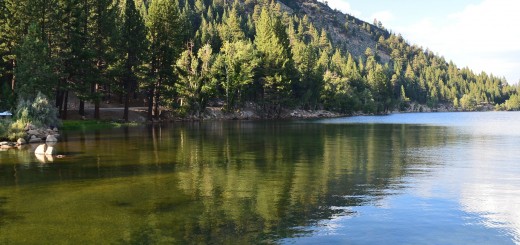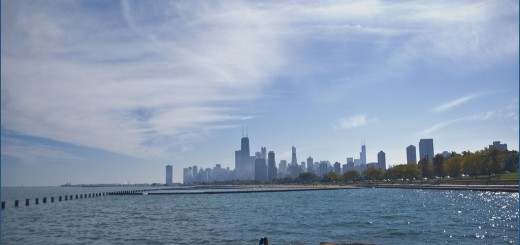Research Summary: Recent Warming Of Lake Kivu
0Deep meromictic lakes are good climate monitors, as changes in heat fluxes across the lake surface become reflected in heat content of the deeper waters. Consistent with recent atmospheric warming, surface temperatures of stably stratified East African Great Lakes increased by about one degree over the last century. The temperature rise could be linked to a number of adverse effects, such as increased physical stability of the water column that decreases nutrient upwelling and diminishes ecosystem productivity.

Evolution of temperature profiles in Lake Kivu. (Credit: Katsev, et al.)
The 450 m deep Lake Kivu, at the border of Rwanda and the Democratic Republic of the Congo, is unique among the African Great Lakes in that in addition to heat exchanges with the atmosphere its temperature is affected by subterranean heat inputs. The sublacustrine heat comes from a complex geological system that includes two active volcanoes, Nyiragongo and Nyamuragira, which constitute the lake’s northern watersheds. These deep heat sources cause the lake temperature to increase with depth below the surface mixed layer, a feature not observed in other lakes. In addition to these unique features, the lake is best known for the prodigious amounts of carbon dioxide and methane in its deep waters, which present both a hazard of a catastrophic limnic eruption and an economic opportunity of extracting the methane for energy generation. Persistent stratification in Lake Kivu is maintained by a salinity gradient with multiple pycnoclines, the strongest ones located at the depths of 60, 160, 250, and 310 meters. The pycnoclines are believed to be maintained by several sublacustrine inflows, which preserve the salinity and temperature gradients against dissipation by diffusion. The uppermost pycnocline (60 m) marks the lower boundary of the epilimnion and the seasonal maximum depth of wind-induced mixing. The temperature decreases from surface into the epilimnion and down to the depth of approximately 80 m, but increases below that depth due to sublacustrine heat inputs. The resultant reverse temperature gradient in deep waters implies an upward transport of heat towards the depth of the temperature minimum. This heat may be removed only through epilimnetic mixing, e.g. if weaker temperature gradients during a dry season allow mixing to that depth, or if a cold inflow enters the lake at that depth.
Past studies have reported surface warming of Lake Kivu of up to 0.5 degrees C over the past 30 years. Monimolimnion warming, on the other hand, has received less attention. Until recently, warming was thought to be dominated by the atmospheric signal and limited to upper 250 m (the depth of the strongest pycnocline). Thermal effects of the Nyiragongo lava inflows after a 2002 eruption were deemed insignificant. Recently, however, warming below 250 m was also acknowledged, though whether the source of the heat was atmospheric or subterranean was not identified. Constraining the rate of the heat transfer in the deep monimolimnion is difficult, as the reverse temperature gradient results in double-diffusion structures that are intermittent and often laterally localized within several hundred meters. Non-diffusive transport mechanisms, such as convection generated by localized heat sources or density flows have not been quantified. Despite several attempts to calculate mixing coefficients and fluxes, the rates of vertical mixing remain uncertain. In this paper, we compile multi-decadal records of lake temperature profiles that show that the temperatures have increased throughout the entire water column of Lake Kivu. We quantify these increases, as well as the extent of seasonal mixing and epilimnetic heat removal. Focusing on multi-year and multidecadal trends, we discuss the likely causes of warming, sources of heat in the surface mixed layer and deep waters, evidence for convective mixing in deep waters, and implications for lake stability.
Full study, including Materials & Methods, Results and Discussion, published under Open-Access license in PLOS ONE.
Featured Image: Lake Kivu. (Credit: Flickr User YAOtieno via Creative Commons 2.0)













